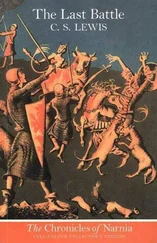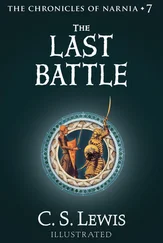WRITING HISTORY IS ALWAYS CHALLENGING, in that the passage of time often obscures the truth rather than revealing it. Eyewitnesses pass away, memories fade, and records—if they were kept at all—are destroyed as being no longer relevant or simply disappear into bureaucratic oblivion. And there is an added difficulty when we try to write accurate accounts of military actions: the exhaustion, fear, exhilaration, panic, and sheer volume of war ensure that participants in the same battle will forever remember it in profoundly different ways.
That being said, it is the historian’s duty to diligently search out whatever documents remain and, if writing about relatively recent events, any participants who may still be alive. Much as a detective evaluates evidence through knowledge of the subject and the application of both logic and common sense, the historian assesses the available information and then weaves all the various strands into an account that is as accurate and complete as possible. For many who choose to write history, myself included, the hunt for the information on which the final story is based is the most enjoyable part of the process, even though it is often the most frustrating.
Fortunately, in researching The Last Battle I have been ably and generously assisted by a number of people in the United States and abroad. Their help has been immensely important, and I greatly appreciate it. Any errors or omissions in this volume are, of course, mine alone.
Above all, I wish to thank my wife, Margaret Spragins Harding. This book would literally not have been possible without her love, support, counsel, limitless patience, and extraordinary skills as a French linguist. She is the most remarkable human being I have ever encountered, and I am truly blessed to have her in my life.
I would also particularly like to thank Dr. Alfred Beck, an eminent historian and true gentleman, who many years ago—when we both worked at the U.S. Army Center of Military History—first told me of an odd little battle in Austria in May 1945 that involved Germans, Americans, and a gaggle of French VIPs. Thanks also to my agent, Scott Mendel, for his excellent advice and guidance; Robert Pigeon, my editor at Da Capo, for his friendship and assistance in shaping and improving the manuscript; and Bryce Zabel, friend and screenwriter, for suggesting that the Schloss Itter story would make just as good a book as it will a screenplay.
I am also indebted to:
IN THE UNITED STATES:
My colleagues Michael W. Robbins, David Lauterborn, Dan Smith, and Jennifer Berry at Weider History Group’s Military History magazine for putting up with my frequent absences and almost continuous preoccupation while writing this book.
Karen Jensen and Wendy Palitz, both of Weider’s World War II magazine; editor Karen for commissioning me to write the article from which this book evolved, and art director Wendy for both her friendship and the article’s wonderful design.
Thomas Culbert and Mike Constandy for their dogged research work at the National Archives.
Joe Basse for providing information on, and photos of, his father, Harry Basse.
Robert D. Lee for providing information on, and photos of, his uncle John C. Lee.
John Kramers, Arthur Pollock, and Edward Seiner for their personal recollections of the battle for Schloss Itter.
Victoria Haglan for her excellent German translations.
Patricia E. Evans, Chenango County, New York, historian, for locating and providing background material on John Lee and his family.
Gail Wiese, Jennifer Payne, and Kelly Gonzalez of Norwich University’s Archives and Special Collections for their help in researching John Lee’s time at the university.
Veterans of the 12th Armored Division F. George Hatt and Steve Czecha and 23rd Tank Battalion veterans James Francis and John McBride, all for their help in researching their units and the men who served in them.
Lisa Sharik and the staff of the Texas Military Forces Museum and Kyle Wiskow and the staff of the 12th Armored Division Museum for their research assistance.
John P. Moore for providing vital background information on Kurt-Siegfried Schrader.
John Browning for information on his brother William Browning, squad leader in Company E, 142nd Infantry Regiment.
Ron Thomassin for providing photos of Harry Basse.
Megan Lewis at the U.S. Holocaust Memorial Museum for her research efforts on Sebastian Wimmer and Stefan Otto.
IN AUSTRIA:
The staff of Gemiende Itter, who were tremendously helpful both via e-mail and during my visit to Schloss Itter; Robert Kaller of Vienna’s Institut für Zeitgeschichte; Hedi Wechner, current mayor of Wörgl; Otto Hagleitner, for information on his father, Rupert; and Dr. Wilfred Beimroh and the staff of the Tiroler Landesarchiv.
IN FRANCE:
Evelyne Demey Paul-Reynaud, for sharing family history and photographs of her parents taken while they were imprisoned in Schloss Itter.
Lise Pommois, for sharing photos of 23rd Tank Battalion operations in Alsace.
IN GERMANY:
The research and reference staffs of the Stadtarchive Ludwigsburg, KZ-Gedenkstätte Dachau, and the Bundesarchiv’s Militärarchiv.
IN POLAND:
Marta Grudzińska at the Majdanek Museum and Archive for information on Sebastian Wimmer’s activities at the infamous concentration camp.
IN SWITZERLAND:
Remo Becci, archivist of the United Nations International Labor Organization office in Geneva, for providing background information on and photographs of Augusta Léon-Jouhaux.
PRIMARY SOURCES
OFFICIAL DOCUMENTS
Many of the sources below are part of the National Archives and Record Administration’s Modern Military Records Center in College Park, MD; these are indicated with the abbreviation NARA MMRC.
Armored Force Field Manual, Tactics and Technique. U.S. War Department. March 1942. Archives II, NARA MMRC.
Battalion Diary for Month of May 1945. 753rd Tank Battalion. Oct. 31, 1945. NARA MMRC.
Battlegroup Buddenbrock, 16 March–4 May 1945 , by Generalmajor Jobst Freiherr von Buddenbrock. Foreign Military Studies, 1945–1954. Department of the Army, Washington, DC, 1956.
Company History, 1–8 May 1945 . Company D, 753rd Tank Battalion. May 10, 1945. NARA MMRC.
Final Strike Assessment, Wörgl M/Y, Austria . Photo Interpretation Officer, 301st Bombardment Group (Heavy), Feb. 23, 1945. NARA MMRC.
General Order 212 . HQs., U.S. Forces, European Theater, Aug. 29, 1945.
The German Replacement Army (Ersatzheer) . Military Intelligence Division, War Department, Washington, DC, April 1944. NARA MMRC.
Himmler’s Files from Hallein . Office of the Military Governor for Germany (U.S.), Office of the Director of Intelligence, Nov. 8, 1945. NARA MMRC.
Historical Narrative for May 1945 . HQs., 753rd Tank Battalion, n.d. NARA MMRC.
History of the 142nd Infantry Regiment, 36th Division, Sept. 3, 1943–May 8, 1945 (Volume II, France, Germany, Austria) . HQs., 142nd Infantry Regiment, n.d. NARA MMRC.
Journal of Operations, 1944–1945 . HQs., 17th Armored Infantry Battalion, n.d. NARA MMRC.
Kampf um die Alpenfestung Nord , by General der Gebirgstruppen Georg Ritter von Hengl. Foreign Military Studies, 1945–1954. Department of the Army, Washington, DC, 1956.
Operations in Germany, 1–10 May 1945 . 23rd Tank Battalion, 12th Armored Division, Feb. 15, 1946. NARA MMRC.
Operations in Germany and Austria, May 1945 . HQs., 103rd Infantry Division, July 1945. NARA MMRC.
Operations in Germany and Austria, 1–10 May 1945 . HQs., 142nd Infantry Regiment, 36th Infantry Division, May 25, 1945. NARA MMRC.
Читать дальше












